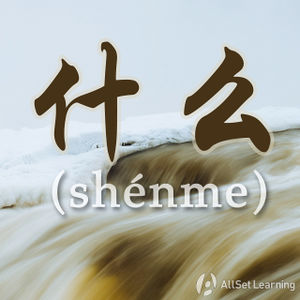Difference between revisions of "Expressing "everything" with "shenme dou""
| Line 54: | Line 54: | ||
<div class="liju"> | <div class="liju"> | ||
| − | * 你 做 的 <em>什么</em> 菜 <em>都</em> 好吃。 | + | * 你 做 的 <em>什么</em> 菜 <em>都</em> 好吃。<span class="trans">The dishes you make are all good.</span> |
| − | * 现在 <em>什么</em> 地方 <em>都</em> 热。 | + | * 现在 <em>什么</em> 地方 <em>都</em> 热。<span class="trans">Now all places are hot.</span> |
| − | * 她 <em>什么</em> 衣服 <em>都</em> 是 红色 的。 | + | * 她 <em>什么</em> 衣服 <em>都</em> 是 红色 的。<span class="trans">All of her clothes are red.</span> |
| − | * 我 觉得 我 老公 <em>什么</em> <em>都</em> 好。 | + | * 我 觉得 我 老公 <em>什么</em> <em>都</em> 好。<span class="trans">I think my husband is all good.</span> |
| − | * 我 <em>什么</em> 女孩子 <em>都</em> 喜欢。 | + | * 我 <em>什么</em> 女孩子 <em>都</em> 喜欢。<span class="trans">I like all girls.</span> |
| − | * 我们 <em>什么</em> 酒 <em>都</em> 喝。 | + | * 我们 <em>什么</em> 酒 <em>都</em> 喝。<span class="trans">We can drink all alcohol.</span> |
| − | * 大 城市 <em>什么</em> 人 <em>都</em> 有。 | + | * 大 城市 <em>什么</em> 人 <em>都</em> 有。<span class="trans">Big cities has it all.</span> |
* 你 不 应该 <em>什么</em> 话 <em>都</em> 跟 他 说。<span class="trans">You shouldn't have told everything to him.</span> | * 你 不 应该 <em>什么</em> 话 <em>都</em> 跟 他 说。<span class="trans">You shouldn't have told everything to him.</span> | ||
* 我 <em>什么</em> 水果 <em>都</em> 喜欢 吃。<span class="trans">I like to eat all kinds of fruits.</span> | * 我 <em>什么</em> 水果 <em>都</em> 喜欢 吃。<span class="trans">I like to eat all kinds of fruits.</span> | ||
Revision as of 09:21, 4 November 2013
-
Level
-
Similar to
-
Used for
-
Keywords
"什么...都/也" (shénme...dōu/yě) is a pattern often used to express "all" or "everything". This pattern also works with other question words, such as 哪儿 and 什么时候.
Contents
Basic Structures
什么都/也
The structure is very clear, as many Chinese grammar points are. In this structure, 都 is more frequently used than 也。
Topic + 什么都/也 + Verb/Adjective
Examples
- 我 家什么 都 有。My family has everything.
- 爸爸 什么 都 知道。Dad knows everything.
- 我 什么 都 喜欢吃。I like to eat everything.
- 中国 酒,外国 酒,我 什么 都 喝。Chinese liquor, foreign liquor, I drink everything..
- 我 女 朋友 什么 都 买。My girlfriend buys everything.
- 我 家 的 宝宝 什么 都 要。The baby in my family wants everything.
- 她 对 我 什么 都 说。She told me everything.
- 很 多 人 觉得 外国 的 东西 什么 都 好。Many people think foreign countries things are all good.
- 上海 什么 都 贵。Everything in Shanghai is expensive.
- 我 女儿 的 衣服 什么 都 是红色的。All of my daughters clothes are red.
- 我 家 什么 都 干净。My family is always clean.
- 这里 的 菜 什么 都 好吃。Everything is good to eat here.
Patulous Structures
Structures with a Noun
什么 + Noun + 都
什么 + Noun + 也
Examples
- 你 做 的 什么 菜 都 好吃。The dishes you make are all good.
- 现在 什么 地方 都 热。Now all places are hot.
- 她 什么 衣服 都 是 红色 的。All of her clothes are red.
- 我 觉得 我 老公 什么 都 好。I think my husband is all good.
- 我 什么 女孩子 都 喜欢。I like all girls.
- 我们 什么 酒 都 喝。We can drink all alcohol.
- 大 城市 什么 人 都 有。Big cities has it all.
- 你 不 应该 什么 话 都 跟 他 说。You shouldn't have told everything to him.
- 我 什么 水果 都 喜欢 吃。I like to eat all kinds of fruits.
- 今天 我 什么 工作 都 做 了。Today I did all my work.
Negative Structures
Structures with 不/没
The negative structure simply adds a 不 or a 没 after the 都/也.
什么 + Noun. + 都/也 + 不
什么 + Noun. + 都/也 + 没
Examples
- 以后 你 应该 什么 酒 都 不 要 喝。From now on,you should not drink any wine.
- 我 什么 电影 都 不 喜欢 看。I don't like to watch any movie. (implying I don't like movies in general)
- 很 多 人 觉得 中国 的 东西 什么 都 不 好。
- 小 城市 什么 都 不 贵。
- 我 什么 女孩子 都 不 喜欢。
- 为什么 你 什么 工作 都 没 做?
- 今天 我 什么 东西 都 没 吃。Today I didn't eat anything.
- 她 什么 话 都 没 跟 我 说。She didn't tell me anything.
- 我 家什么 都 没 有。
- 周末 的 时候,我 什么 都 没 去。
See also
Sources and further reading
Books
- Common Chinese Patterns 330 (汉语常用格式330例) (pp. 195)→buy
- Modern Mandarin Chinese Grammar: A Practical Guide (pp. 286-8) →buy
- Integrated Chinese: Level 1, Part 2 (3rd ed) (pp. 216-7) →buy
- 40 Lessons for Basic Chinese Course (基础汉语40课下册) (p. 314)→buy



